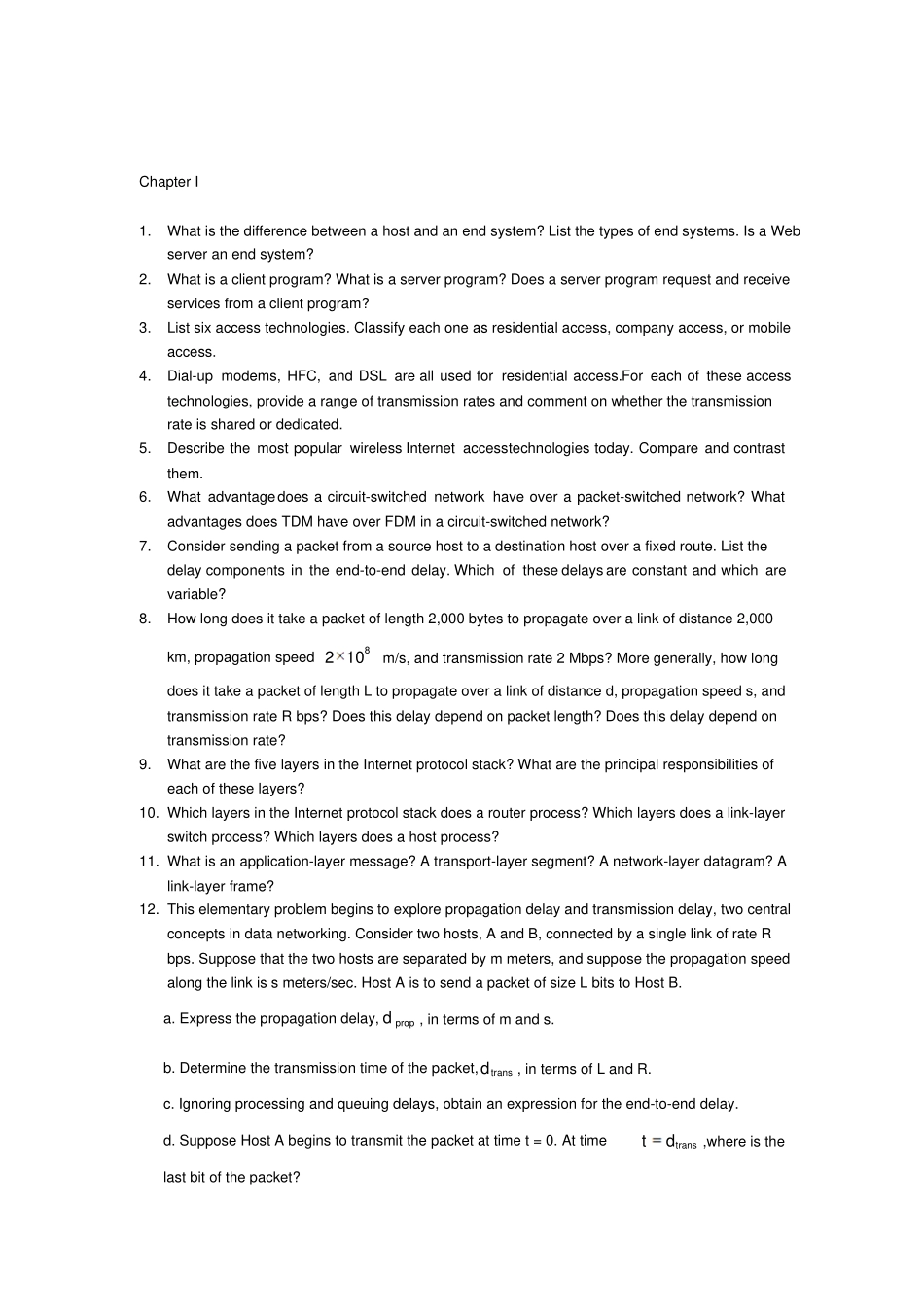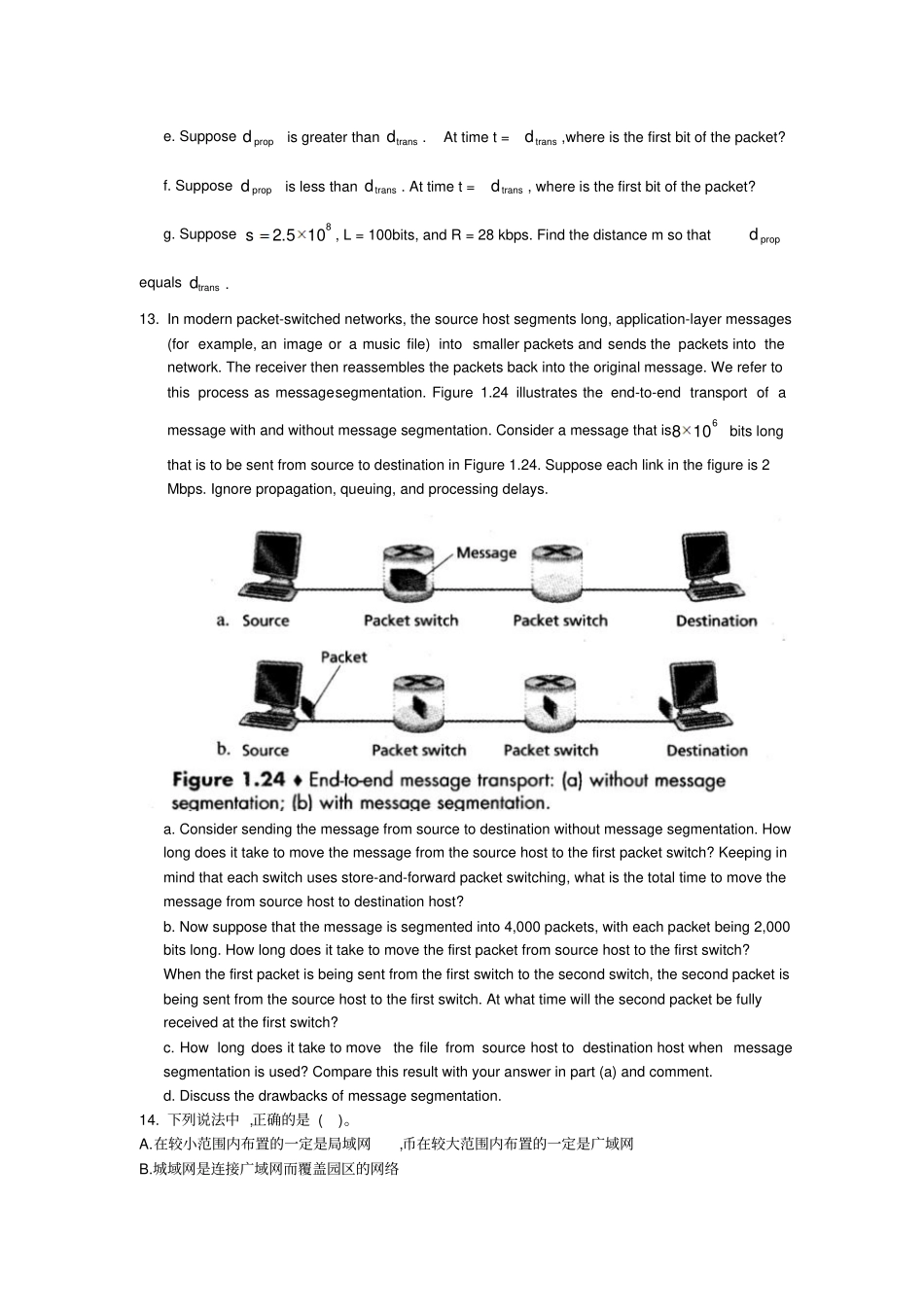Chapter I 1.What is the difference between a host and an end system? List the types of end systems. Is a Web server an end system? 2.What is a client program? What is a server program? Does a server program request and receive services from a client program? 3.List six access technologies. Classify each one as residential access, company access, or mobile access.4.Dial-up modems, HFC, and DSL are all used for residential access. For each of these access technologies, provide a range of transmission rates and comment on whether the transmission rate is shared or dedicated.5.Describe the most popular wireless Internet access technologies today. Compare and contrast them. 6.What advantage does a circuit-switched network have over a packet-switched network? What advantages does TDM have over FDM in a circuit-switched network? 7.Consider sending a packet from a source host to a destination host over a fixed route. List the delay components in the end-to-end delay. Which of these delays are constant and which are variable? 8.How long does it take a packet of length 2,000 bytes to propagate over a link of distance 2,000 km, propagation speed 8102m/s, and transmission rate 2 Mbps? More generally, how long does it take a packet of length L to propagate over a link of distance d, propagation speed s, and transmission rate R bps? Does this delay depend on packet length? Does this delay depend on transmission rate? 9.What are the five layers in the Internet protocol stack? What are the principal responsibilities of each of these layers? 10. Which layers in the Internet protocol stack does a router process? Which layers does a link-layer switch process? Which layers does a host process? 11. What is ...


